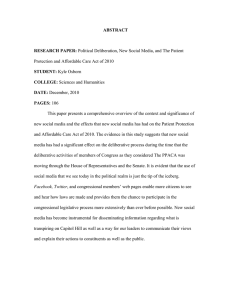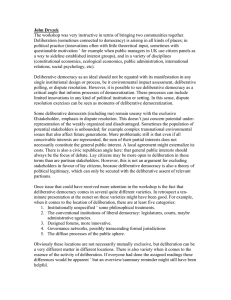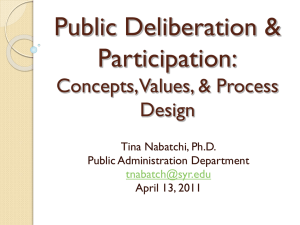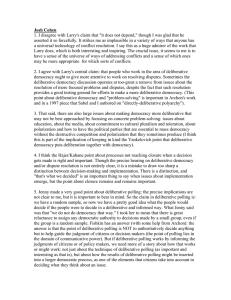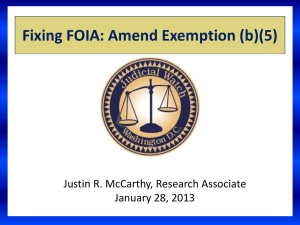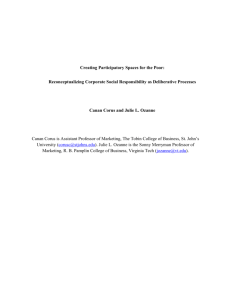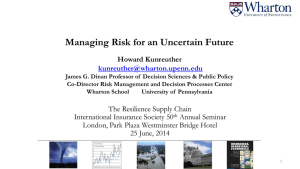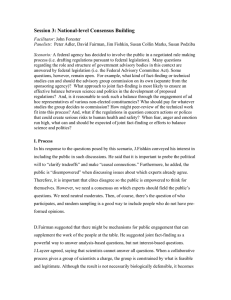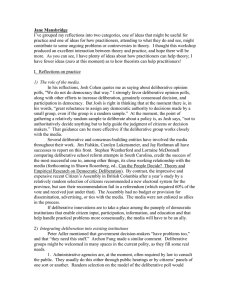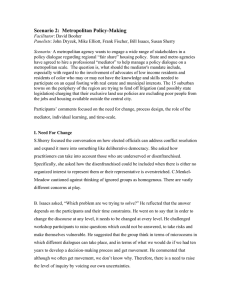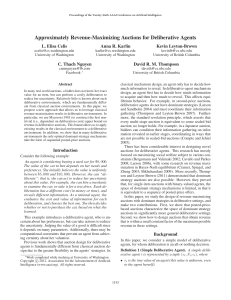Deliberative Polling Challenge:
advertisement
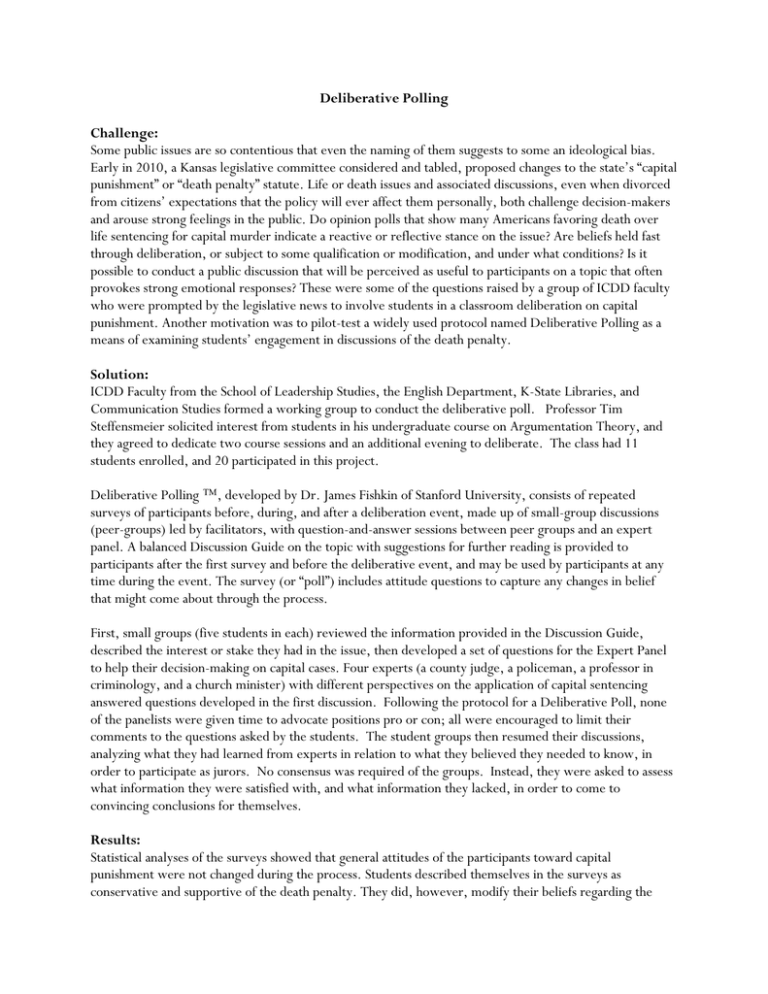
Deliberative Polling Challenge: Some public issues are so contentious that even the naming of them suggests to some an ideological bias. Early in 2010, a Kansas legislative committee considered and tabled, proposed changes to the state’s “capital punishment” or “death penalty” statute. Life or death issues and associated discussions, even when divorced from citizens’ expectations that the policy will ever affect them personally, both challenge decision-makers and arouse strong feelings in the public. Do opinion polls that show many Americans favoring death over life sentencing for capital murder indicate a reactive or reflective stance on the issue? Are beliefs held fast through deliberation, or subject to some qualification or modification, and under what conditions? Is it possible to conduct a public discussion that will be perceived as useful to participants on a topic that often provokes strong emotional responses? These were some of the questions raised by a group of ICDD faculty who were prompted by the legislative news to involve students in a classroom deliberation on capital punishment. Another motivation was to pilot-test a widely used protocol named Deliberative Polling as a means of examining students’ engagement in discussions of the death penalty. Solution: ICDD Faculty from the School of Leadership Studies, the English Department, K-State Libraries, and Communication Studies formed a working group to conduct the deliberative poll. Professor Tim Steffensmeier solicited interest from students in his undergraduate course on Argumentation Theory, and they agreed to dedicate two course sessions and an additional evening to deliberate. The class had 11 students enrolled, and 20 participated in this project. Deliberative Polling ™, developed by Dr. James Fishkin of Stanford University, consists of repeated surveys of participants before, during, and after a deliberation event, made up of small-group discussions (peer-groups) led by facilitators, with question-and-answer sessions between peer groups and an expert panel. A balanced Discussion Guide on the topic with suggestions for further reading is provided to participants after the first survey and before the deliberative event, and may be used by participants at any time during the event. The survey (or “poll”) includes attitude questions to capture any changes in belief that might come about through the process. First, small groups (five students in each) reviewed the information provided in the Discussion Guide, described the interest or stake they had in the issue, then developed a set of questions for the Expert Panel to help their decision-making on capital cases. Four experts (a county judge, a policeman, a professor in criminology, and a church minister) with different perspectives on the application of capital sentencing answered questions developed in the first discussion. Following the protocol for a Deliberative Poll, none of the panelists were given time to advocate positions pro or con; all were encouraged to limit their comments to the questions asked by the students. The student groups then resumed their discussions, analyzing what they had learned from experts in relation to what they believed they needed to know, in order to participate as jurors. No consensus was required of the groups. Instead, they were asked to assess what information they were satisfied with, and what information they lacked, in order to come to convincing conclusions for themselves. Results: Statistical analyses of the surveys showed that general attitudes of the participants toward capital punishment were not changed during the process. Students described themselves in the surveys as conservative and supportive of the death penalty. They did, however, modify their beliefs regarding the cost-effectiveness of capital punishment and their confidence in life without parole for convicted murderers. They expressed reservations about death penalty as retribution or revenge, yet believed in its appropriateness for certain (unspecified) crimes. The surveys indicated that participants were positive overall in their perception of the peer discussion, the expert panel, and the facilitators. Cognitive and affective perceptions indicated that students positively contributed to the discussion, and their perception of their peers was similarly positive. Students regarded the exercise as a good experience, despite the topic’s controversial nature. Fishkin argues that deliberative polling offers a more substantive portrait of public opinion than normal surveys due to prevailing opinions that well-conducted deliberations can achieve among participants. As a test-run, this exercise did not conform to a protocol requirement for random participant sampling, used in research to demonstrate the poll’s use as an improved gauge of public opinion. Unfortunately, participants’ comprehension of the distinction between aggravating and mitigating circumstances (which is essential in instructions for Kansas jurors in a capital murder case) was low, both before and after the deliberative event. This may have been due to a lack of facilitator and expert panel focus on those instructions, although the discussion guide included them. This calls to question whether participants can learn and retain new information by the process of deliberating. ICDD is interested in pursuing deliberative polling further, but recognizes that its use as a research method or as a pedagogical exercise will require more rigor.
